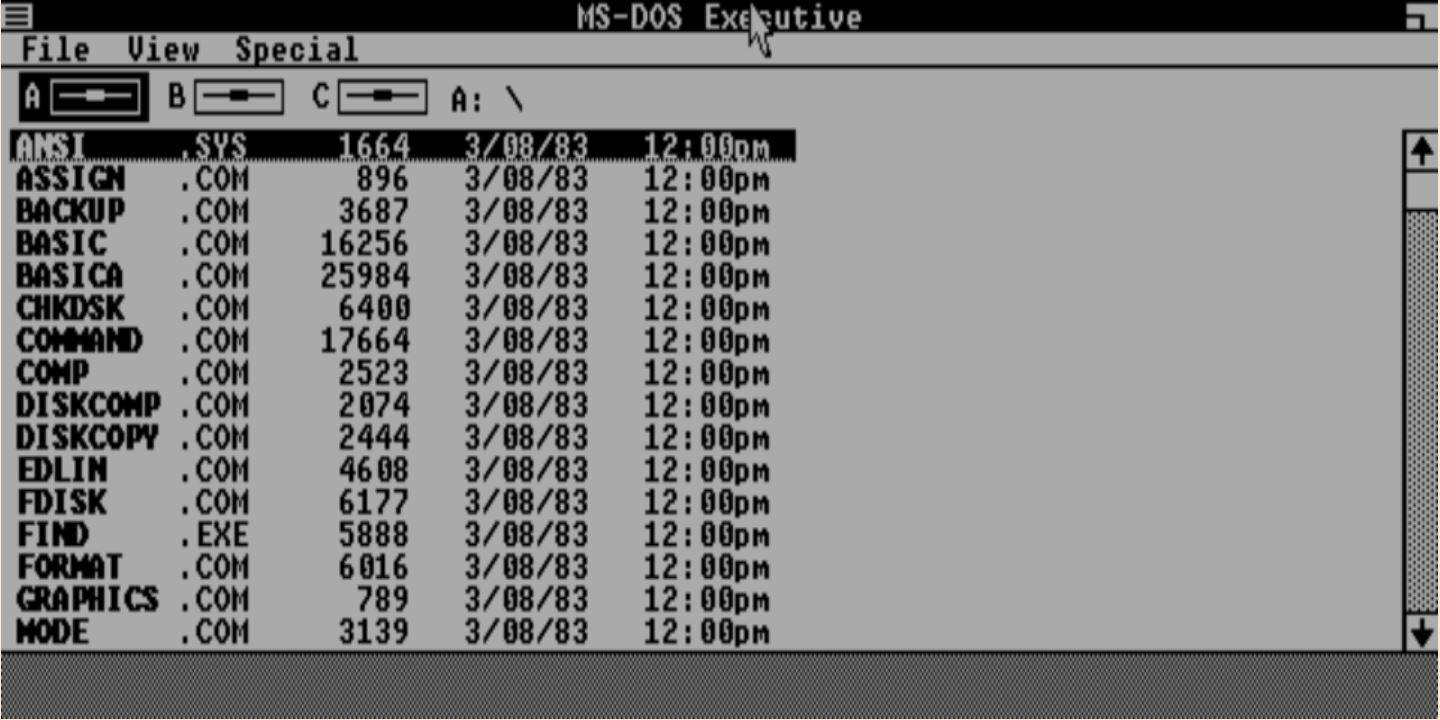Want to travel back in time? Microsoft Windows v1.01 will take you there.
Back in 1985, personal computers were just a concept, an experiment to see how consumers would respond to a device so alien, and extravagant in its primal form, and yet so fascinating.
30-40 years ago, the challenge that young enterprises like Microsoft and Apple faced, was to create the personal computer as something that regular users would be able to operate, without being required to understand it.
In a world still dominated by an image of computing that dates back to the 1950s, where blocks of text on black screens, cryptic commands, and noisy 6-ft tall file cabinets were as much as anyone would know about computers, visionaries of the time decided to go the opposite direction, by making the computer smaller, and fit for a desk. Graphical users interfaces, or GUI, began to sprout, layering over the black and white (or green), to provide a better metaphor that consumers would understand, without being required to memorize complex text commands.
Microsoft Windows 1.01 was born.
Those who owned an IBM personal computer in 1985, or worked with one, will remember the IBM PC XT models, featuring the iconic industrial beige/white case. The blocky, almost cubic design, with the CRT monitor sitting atop the case, which was shaped like a DVR (or VHS player, if you will...), would carry over almost two full decades, before giving way to slimmer, more compact hardware.
With particular reference to the IBM PC XT Model 5160, the operating system of choice was the very first of its kind, which marked a partnership between the two companies, until IBM moved away from consumer computing years later.
The XT was powered by a CPU in the range of 4/5MHz clock speed, with 256Kb of RAM, and with support for removable 7.2 inch floppy disks.
Some of those belonging to the X Generation, might not remember, however, that Windows did not come in colors, in its first iteration. Microsoft Windows v1.01 was created for monochrome CGA displays.

In spite of the limitations posed by the technology of its time, Windows 1.01 was surprisingly limber, and designed with productivity in mind, with applications ranging from the very basic of internal computer management, like the ability to format disk drives and removable media, to more office-like applications, like Write, the first rich-text word processor shipped with Windows, which would be eventually replaced by WordPad, and which shares the same executable name, write.exe. Write introduced also the .doc file format, which would later be known as the default format supported in Microsoft Word.
Microsoft Paint was also introduced for the first time, as a user-friendly drawing application, which was surprisingly capable, with support for Bezier curves, shapes, text input, and selections. Paint was a long way from its current iteration of the same, but it provided a way for consumers to get acquainted with personal computers, in a fun, interactive way. Microsoft began to include games like Reversi, for the purpose of teaching consumers how to interact with the new system. Games and friendly user interfaces were key to introducing consumers to computing.
To get an idea of what it was like to use Windows v1.01, Twitter user and computer engineer Jeff Par has created PCjs, an emulator that can run within a browser window, which simulates the Windows 1.01 experience down to the fine details, and which is available here:
http://www.pcjs.org/devices/pc/machine/5160/cga/256kb/win101/
For those unfamiliar with systems built in the pre-Windows 95 era, Windows 1.01 was designed atop what was known as MS-DOS Executive, which was the precursor of Microsoft DOS, on which Windows 95 ran, up until 32-bit computing took over, upon the release of Windows 98.
DOS was a “command interpreter”, essentially a program that translates plain English words, into commands that the computer understands. While there is hardly any use for DOS, when it comes to entry-level end-users, more advanced users will find the ability to type commands into a terminal window, a very valuable method of interacting with a system.
Ironically, when thinking about Cortana in modern Microsoft Windows 10 laptops, all the way up to the Microsoft Surface Book, the world of consumer computing is now coming full-circle, with users now naturally gravitating towards a semantic approach to issuing commands.